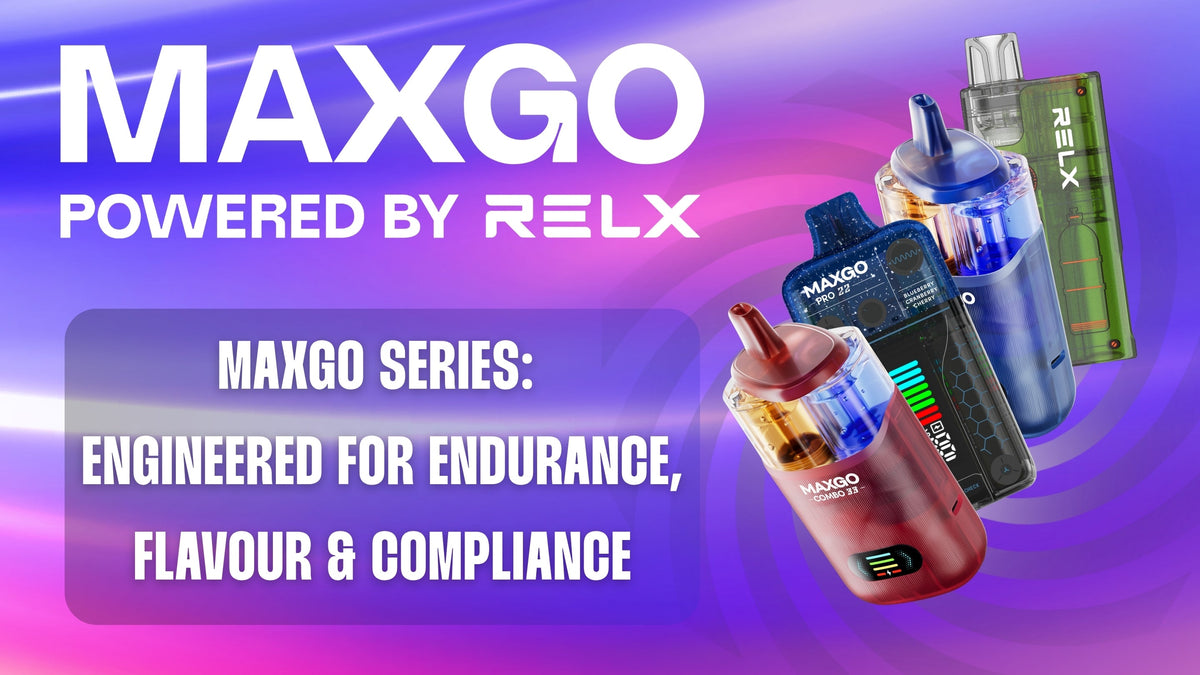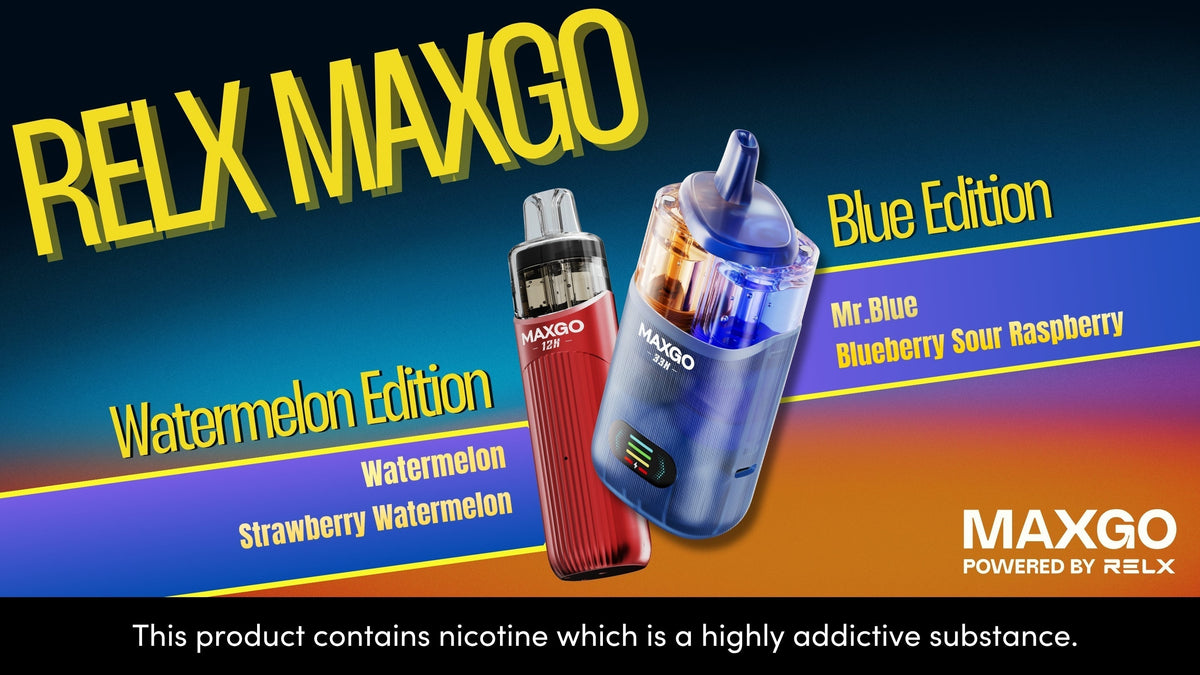The History of Vaping
Many people don't know the history of vaping despite the spike in popularity over the last few years. While vaping has become more popular and feels like a recent phenomenon, it’s been a product and concept in the making for the past 100 years. It took several designs, ideas, and circumstances to get e-cigarettes to where they are now.
Let's uncover how the vape came to be and see how technological advancements continue to improve it.
When Did Vaping First Begin?
To pinpoint the exact moment that vaping first began would be nearly impossible because while devices similar to vapes were invented in the 20th century, vaping, as we know it now, is a concept that evolved over many years since that first invention.
Key Innovators and Milestones in Vaping History
1927: Joseph Robinson
It will come as no surprise that the first vaping device arose as a consequence of cigarette smoking; Joseph Robinson, an American living in New York, designed a vape-like device in 1927 as a solution to burns from cigarettes. He patented the ‘Mechanical Butan Ignition Vaporizer’ - and while not the catchiest name, Robinson aimed to make the inhalation of vapour easier and safer.
Sadly for Robinson, this invention didn’t take off even though his patent was approved three years later. While he stated in the patent that the primary purpose was for more medicinal purposes, scientists didn't link the notion of cigarette smoking with causing lung cancer until the 1940s and 1950s. Having never taken it to the market, the device was little known among the general population.
1963: Herbert A. Gilbert
While not as nearly technologically advanced as the vapes we have today, Herbert Gilbert’s patented invention is similar to contemporary vapes. Like today, this vape even had a range of flavours; he termed it the ‘smokeless’ as he wanted to create a device that would offer a non-combustible alternative to cigarettes.
Gilbert was known to be an avid smoker and could go through two packs of cigarettes a day, so for him, his creation was meant to offer a healthier alternative.
While Gilbert’s device did work, and despite his efforts to market it as a weight-loss solution, no companies saw it as a promising product that could become as popular as it is today. Crucially, while the 1960s favoured smoking over this new device, there are remarkable similarities in Gilbert’s design with those used today, demonstrating how ahead of his time Gilbert was.
1980s: Phil Ray
In the 1980s, Phil Ray, a computer engineer, worked with Norman Jacobson, a physician, to create a device to inhale nicotine without combustion. While this was a variation on an e-cigarette, the device they made wasn’t electronic. Instead, it relied on the evaporation of nicotine and not the heating of any component.
But Ray and Jocobson’s device led to the same fate as Gilbert's; it wasn’t popular, so it never gained popularity. However, Phil Ray was the first to use the term “vape” as a verb.
2001: Hon Lik
Many years after scientists made the connection between smoking and lung cancer, Hon Lik, a pharmacist from China, decided to find an alternative to smoking after his father died from lung cancer. Unlike his predecessor, Lik had a range of technological advancements to play with. He experimented with different vaporisation systems and techniques to find a substance that could replace the sensation of cigarette smoking.
Eventually, he settled on the combination of propylene glycol and vegetable glycerin, which are still key ingredients in today’s vapes. Lik’s design would also incorporate lithium batteries to power an atomiser inside a tube, replicating the physical feeling of a cigarette, much like today's vape pens. Unlike his predecessors, Lik was far more successful. His e-cigarette became the first commercially successful vape when it entered the Chinese market in 2004 and then again in 2006 with European and US markets.
The Evolution of Vaping Components and E-Liquids
Design and Components
Two decades have passed since Lik's design, and with the passing of time have come technological advancements. Thanks to these advancements, the vape and its components have continued to evolve, and improvements have been made, including:
- Vape Tanks - Advancements have led to a decrease in annoying leaks, and with that comes an increase in efficiency.
- Coils - Coils are critical to vapourising your e-liquid, and developments have led to a range of coils that alter the vaping experience, be that mesh coils, double-mesh coils, high or low-resistance coils, and different coil shapes.
- Mods - Mods are simply the components of your vape that contain the battery, but these have grown to incorporate screens, different modes, and powerful chipsets to give vapers more control.
- Battery - More battery options mean different charges and power control can be available, from single-use batteries to rechargeable ones.
- Mouthpiece - With a rise in research into the ergonomic feel of vapes, there are now more comfortable designs to enhance the vaping experience.
E-Liquids
For many vapers, the range of e-liquids and flavours available is a top priority and can mean the difference between a good or lousy vaping experience. Sadly, it’s also this range of flavours that is dangerouslyencouraging underage usage.
Two central ingredients in e-juice remain propylene glycol and vegetable glycerin. When manufacturers combine different quantities, it can change the vaping experience for many. For example, those searching for more giant vapour clouds will likely want to use a higher vegetable glycerin to propylene glycol ratio.
However, other users might be more concerned with smoothness or flavour. The range of e-liquids gives vapers more variety and, thus, more control over their experience. Additionally, different nicotine levels are available in other e-juices to suit a variety of preferences.
The Changing Landscape of Vaping Regulations
With the popularity of vaping spiking in recent years, concerns have been growing in the scientific community as to what the long-term health effects could be, and this has escalated to a government level, primarily due to the rise in underage vaping. With this growing concern, the UK government is changing its vaping regulations, which include:
- Banning disposable vapes
- Vape flavours and packaging will be restricted
- Quicker £100 penalty fines for shops in England and Wales selling vapes to children illegally
With changing legislation, it can be hard to comprehend fact and fiction, so stay informed to ensure you have allthe necessary vaping facts.
How Has Vaping Grown in Popularity?
Now that there’s no hiding that smoking tobacco cigarettes is terrible for your health in several ways, more people are looking for cigarette alternatives. While researchers won’t know the long-term health effects of vaping for many more years, vaping is an alternative that allows you to inhale nicotine without inhaling toxic substances like tar. The National Health Service also list vaping as a possible nicotine replacement therapy in a smoker’s cessation journey.
The rise in popularity among non-smokers also stems from the advancements in flavourings as well as the positive portrayal of vaping on social media platforms.
The Future of Vaping
It’s impossible to predict the future, but vaping manufacturers will likely continue their technological advancements to make the best products. While regulations vary from country to country and are constantly changing, technology continues to move forward.
With more and more flavours and different types of vape designs flooding the markets, it’s clear that vaping will remain popular for some time.
Frequently Asked Question
When Was Vaping Invented?
It depends on how you define the origins of vaping. While the idea wasn’t first made until 1927, it was in the 1960s that the term ‘to vape’ was invented. However, Hon Lik created the first successful commercial vape in 2001.
Who Was the First Person to Smoke a Vape?
While Hon Lik invented the vape device as we know it now, it’s nearly impossible to determine who was the first person to smoke a vape pen. It’s possible to imagine that the first person could be Hon Lik himself, but that’s only a theory.
Final Thoughts
The history of vaping and e-cigarettes is a complex one. Many inventors have tried and failed to make the e-cigarette fly off the shelves. However, with changing understandings of health and trends come changing perceptions. So now that you understand the history behind vaping, why not appreciate the technological designs and find the ideal vape to suit you at RELX today?
Also in Vape Knowledge

RELX MaxGo Series Showdown: Which Powerhouse Matches Your Vaping Rhythm?

Beyond Disposable: How RELX MAXGO 33K & 12K Redefine Sustainable Vaping Excellence

How Long Until I Can Vape After Wisdom Teeth Removal?
Vaping after wisdom tooth removal is not recommended, as it can cause complications like dry sockets. Patients should wait at least three days before vaping to ensure proper healing and minimize risks associated with the extraction site.


















